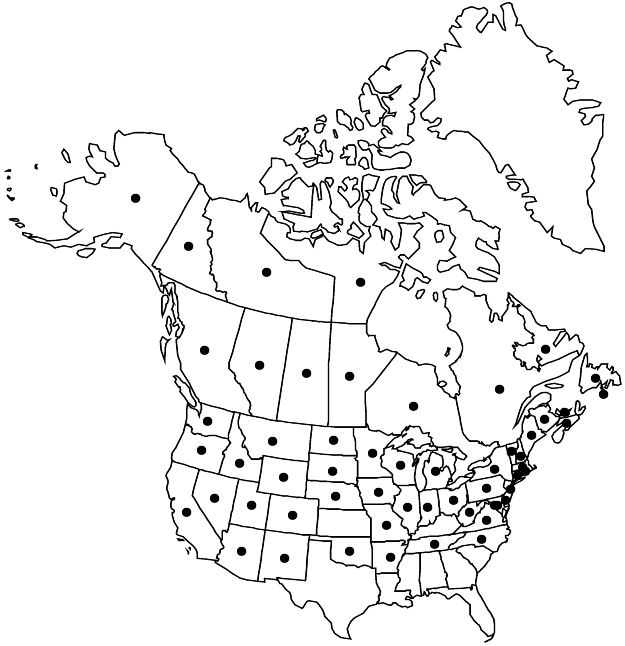Difference between revisions of "Rubus idaeus"
Sp. Pl. 1: 492. 1753.
FNA>Volume Importer |
FNA>Volume Importer |
||
| Line 22: | Line 22: | ||
|distribution=North America;Mexico;Eurasia;Africa. | |distribution=North America;Mexico;Eurasia;Africa. | ||
|discussion=<p>Subspecies 2 (2 in the flora).</p><!-- | |discussion=<p>Subspecies 2 (2 in the flora).</p><!-- | ||
| − | --><p>Rubus idaeus is the source of most of the cultivated red and amber raspberries. Plants were used by the Cherokee, Cree, and others as a parturient; an infusion of dried leaves in water was used to prepare the uterus for childbirth and help women recover after childbirth (D. E. Moerman 1998; D. Hoffman 2003).</p> | + | --><p><i>Rubus idaeus</i> is the source of most of the cultivated red and amber raspberries. Plants were used by the Cherokee, Cree, and others as a parturient; an infusion of dried leaves in water was used to prepare the uterus for childbirth and help women recover after childbirth (D. E. Moerman 1998; D. Hoffman 2003).</p> |
|tables= | |tables= | ||
|references= | |references= | ||
| Line 57: | Line 57: | ||
|publication year=1753 | |publication year=1753 | ||
|special status= | |special status= | ||
| − | |source xml=https://jpend@bitbucket.org/aafc-mbb/fna-data-curation.git/src/ | + | |source xml=https://jpend@bitbucket.org/aafc-mbb/fna-data-curation.git/src/8f726806613d60c220dc4493de13607dd3150896/coarse_grained_fna_xml/V9/V9_51.xml |
|subfamily=Rosaceae subfam. Rosoideae | |subfamily=Rosaceae subfam. Rosoideae | ||
|tribe=Rosaceae tribe Rubeae | |tribe=Rosaceae tribe Rubeae | ||
Revision as of 18:17, 18 September 2019
Shrubs, 5–25 dm, armed or unarmed. Stems biennial, erect, glabrescent, eglandular or stipitate-glandular, strongly pruinose; prickles absent or sparse to dense, erect, weak, 1–4 mm, broad-based; bristles present or absent. Leaves deciduous, pinnately compound; stipules filiform, 5–10 mm; petiole unarmed or with prickles, strigose or glabrous, glandular or eglandular; terminal leaflets petiolulate, lateral sessile or subsessile; leaflets 3–5(–7), terminal ovate to lanceolate, 7–15 × 4–11 cm, base rounded to cordate, unlobed or 2-lobed, margins serrate to doubly serrate, apex acute to attenuate, abaxial surfaces unarmed or with prickles, strongly white-tomentose, eglandular or glandular. Inflorescences terminal and axillary, (1–)3–7(–20)-flowered, racemiform. Pedicels unarmed or prickles sparse, hooked, glabrous or sparsely pubescent, stipitate-glandular or eglandular. Flowers bisexual; petals white to greenish white, spatulate to obovate, 5–10 mm; filaments filiform or slightly dilated basally; ovaries pubescent. Fruits usually red to whitish, rarely amber, globose to conic, 0.5–2 cm; drupelets 10–60, coherent, separating from torus.
Distribution

North America, Mexico, Eurasia, Africa.
Discussion
Subspecies 2 (2 in the flora).
Rubus idaeus is the source of most of the cultivated red and amber raspberries. Plants were used by the Cherokee, Cree, and others as a parturient; an infusion of dried leaves in water was used to prepare the uterus for childbirth and help women recover after childbirth (D. E. Moerman 1998; D. Hoffman 2003).
Selected References
None.
Key
| 1 | Stems eglandular 13a | Rubus idaeus subsp. idaeus |
| 1 | Stems stipitate-glandular. | Rubus idaeus subsp. strigosus |